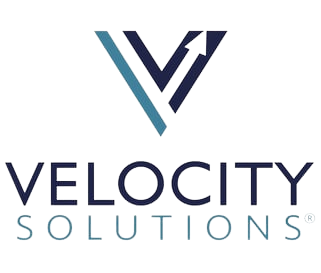The need for financial institutions to adopt digital lending technology, especially for consumer and small- to medium-size business loans, has been well-documented in recent years. The threat to financial institutions from non-bank digital lenders is real, with growth for this market expected to reach $122 billion by 2020—a ten-fold increase in only six years, according to the ABA State of Digital Lending Report. One reason for this exponential growth is the fact that today’s borrowers have come to expect end-to-end, omnichannel digital options, but unfortunately, according to Bain & Company1, only 7% of financial institutions can handle products in this way.
For the most part, community institutions still rely on manual processes for their small to medium-size loan decision-making, with only 13% of community institutions and 32% of larger ones offering instant credit decisions, according to the ABA digital lending report.
Several reliable technology firms provide white-label, third-party digital lending platforms that fully digitize the application and underwriting process to increase efficiencies and enhance the borrower experience. For example, loans processed using manual processes can cost institutions $3,000 to $5,000 per loan2 and require some28 separate, manual tasks. Conversely, using an automated, data-driven underwriting process costs approximately $600 to $900 per loan3 and employs only about nine separate tasks.3 Likewise, the average small business borrower spends about 25 hours filling out paperwork at three different institutions before obtaining a loan,4 when an automated solution can provide the same funds in five days or less with a far less frustrating user experience.
So why haven’t more community financial institutions adopted this technology when the need is clear and a proven solution exists?
One answer may be that financial institution executives simply “don’t know what they don’t know.” This statement is not meant as a criticism of anyone’s decision-making skills or management style. It is the blunt fact that we all have inevitable gaps in our knowledge about how certain technologies (heck, even some everyday items) work. According to the Harvard Business Review, this a cognitive barrier called the illusion of explanatory depth, and it can ultimately hinder leaders from adopting or developing innovative solutions.5
Filling the digital lending knowledge gap
Most financial institution executives are aware of and understand that the term “digital lending” refers to the digitization of all or parts of the loan origination and funding process. Borrowers using a digital solution typically initiate the loan process on a credit union’s website using a computer or mobile device. They get fast approval or denial of the loan amount, can accept the terms of the loan and sign most documentation using e-sign—all within minutes. Funding can be immediate or may take a few more days.
However, what are other digital lending solution attributes that can grow loan volume, improve efficiency and translate into bottom line savings and increased income? Here are three you may not know:
1. Loan Review & Renewal
Using your existing loan portfolio, digital lending technology can automate the entire renewal and review process, including the collection of loan data and communication to borrowers. The technology can provide a dashboard view of all annual renewals or interim reviews for snapshot or detailed information about your entire loan portfolio.
Automating renewal and review processes can reduce your credit union’s costs by as much as 50%,3 while also minimizing the time required to access various resources from 4 to 6 hours to only 30 minutes.3 Just as important, team members previously dedicated to manual, paper-based tasks can now more efficiently meet member and institution needs elsewhere.
2. Financial Analysis & Spreading
While some digital loans can be managed entirely online, there are those, especially larger CRE loans, that may need human intervention. Cloud-based automated lending software automates manual input of borrower financial data, like tax forms, and eliminates the need to manually spread deals, rendering the lending cycle more productive.
Beyond gathering documentation, financial analysis and spreading—for instance, calculating Debt Service Coverage (DSC) and Global Debt Service Coverage Ratio (GDSC) ratios for business loans and debt-to-income (DTI) ratio for consumer loans—can often take 90 to 120 minutes, depending on the capabilities of the credit resource.However, with digital lending technology, time to perform spreading is reduced from an average of 30 minutes to 5 minutes or less,3 and average ratio calculation can be completed in less than 10 minutes, instead of the average 45 to 60 minutes.3
3. Data-Driven Marketing & Targeting
By analyzing your members’ existing share draft accounts, a digital lending platform can identify qualifiedprospects likely to borrow from your credit union, including those who currently turn to alternative sources such as fintechs or other online lenders, competitive institutions like other credit unions or banks, or even payday lenders. A data-driven system can identify qualitycreditworthy borrowers who have a high likelihood of converting into a digital loan product and then provide targeted omnichannel engagement (via print, email, text message, etc.) to communicate to these members.
These are only three features of digital lending technology that you may not have already known. Are there others? What you don’t know may be costing your credit union time, money and, most importantly, members.
1https://www.bain.com/insights/retail-banks-wake-up-to-digital-lending/
2 https://www.bai.org/banking-strategies/article-detail/making-small-business-loans-profitably
3 Akouba by Velocity Digital Lending Platform Internal Data
4 https://www.newyorkfed.org/smallbusiness/Fall2013/index.html








